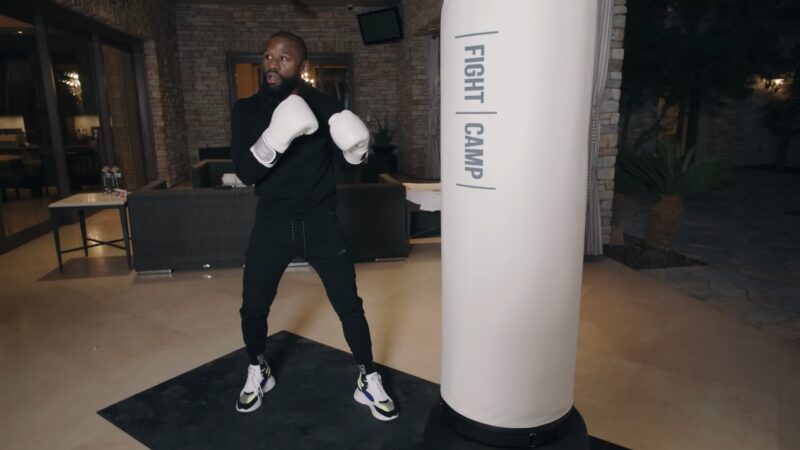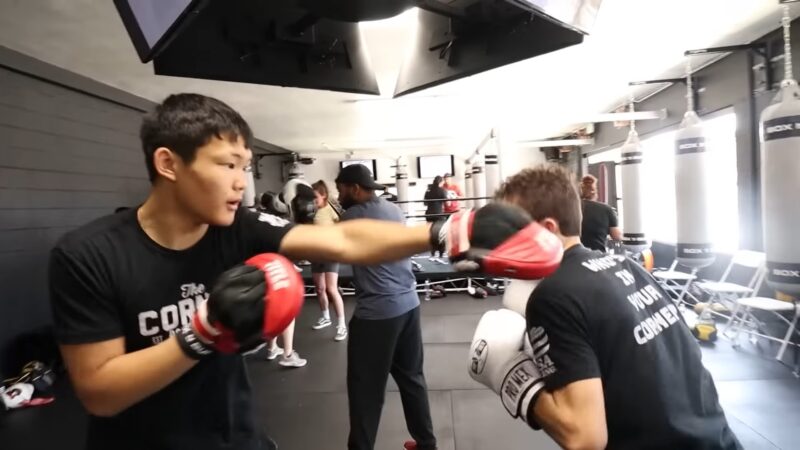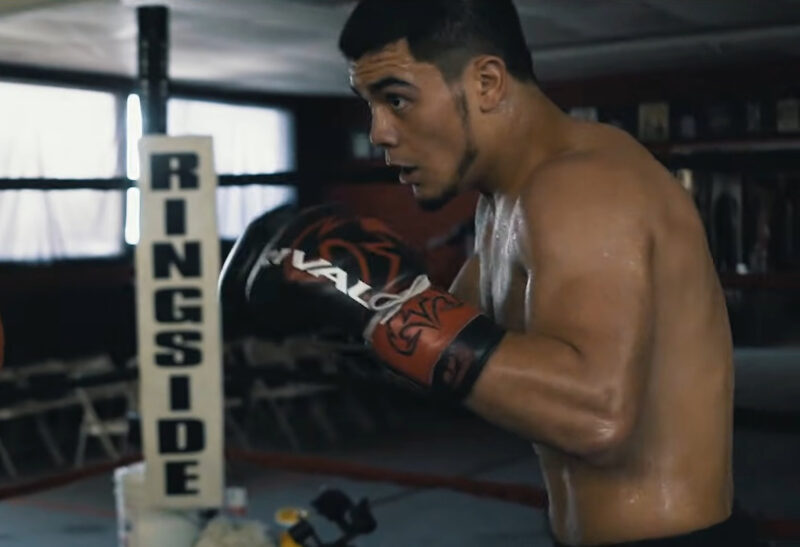Imagine stepping into a boxing gym, the air thick with anticipation and the faint echo of legends past. Here, amid the rhythmic pounding of fists against leather bags, there exists a unique breed of warrior – the southpaw boxer.
In the world of boxing, where tradition and technique blend seamlessly, the southpaw stance stands as a testament to the sport’s rich diversity and strategic depth.
The Enigma of the Southpaw Stance
As a boxing enthusiast, you’ve likely heard the term “southpaw” tossed around in gyms and during matches. But what exactly does it mean? At its core, a southpaw in boxing refers to a fighter who leads with their right hand and right foot forward, contrasting with the conventional stance where the left hand and foot lead.
This unique positioning not only gives Southpaw boxers a strategic advantage but also adds an intriguing layer of complexity to the sport.
The Historical Perspective
The origins of the term “southpaw” are as fascinating as the stance itself. While its exact inception remains a topic of debate, it’s widely believed to have originated from the traditional baseball field orientation, where a left-handed pitcher’s paw would face south when throwing.
This term was later adopted in boxing to describe left-handed fighters, who, like their baseball counterparts, brought a distinct advantage and unpredictability to their sport.
The Advantage
Why does the southpaw stance matter? In a sport where milliseconds and millimeters make the difference, its unconventional angle creates unique challenges for orthodox fighters. From the delivery of punches to defensive maneuvers, a southpaw’s approach disrupts the rhythm and strategies typically employed in the ring.
As we explore further, we’ll uncover why some of the greatest boxers have adopted this stance and how it has shaped their legendary careers.
The Mechanics of the Stance

Knowing the mechanics of the southpaw stance is crucial to appreciating its impact on boxing. Here, we discuss the core elements that define this unique style.
The Stance and Guard
The southpaw stance is defined by the right hand and right foot forward, with the left hand and left foot trailing. This positioning offers a distinct defensive posture and offensive approach.
The southpaw guard typically involves the right hand positioned near the chin for quick jabs and defense, while the left hand is kept slightly lower, ready to unleash powerful crosses or hooks.
Footwork and Movement
Footwork is the cornerstone of boxing, and in this stance, it takes on a unique form. Southpaw fighters often use lateral movements and angles that are less familiar to their orthodox opponents.
This movement pattern not only provides defensive advantages but also opens up new angles for attack.
Punching Strategy
The punching strategy of a southpaw fighter capitalizes on the reversed stance. The right jab, coming from an unexpected angle, can be a potent tool for disrupting an opponent’s rhythm.
Meanwhile, the left cross, thrown from a greater distance, packs a surprising amount of power, often catching opponents off guard.
The Psychological Edge
Beyond the physical aspects, the southpaw stance offers a psychological edge that can be just as important in the ring.
The Element of Surprise
The rarity of southpaw fighters means that many boxers are less accustomed to facing them. This lack of familiarity can lead to hesitation and uncertainty, giving the southpaw fighter a mental advantage.
Similarly, maintaining your equipment in pristine condition, such as ensuring your boxing gloves are properly sanitized and odor-free, can also provide a psychological boost, knowing you’re prepared and at your best for any challenge. Discover effective methods to keep your gloves in great shape, enhancing your training and fighting experience.
Disrupting the Opponent’s Strategy
Most boxers train predominantly against orthodox opponents. When facing a southpaw, their well-practiced strategies and reflexes might not be as effective. This disruption forces them to adapt on the fly, which can be mentally taxing.
Confidence and Intimidation
Southpaw boxers often enter the ring with a psychological edge, knowing they possess a style that can be perplexing to their opponents. This confidence, coupled with the potential intimidation factor, can significantly impact the outcome of a bout.
The Influence on Boxing History

The influence of southpaw boxers in the annals of boxing history is undeniable. Here, we explore how this unique stance has shaped the sport and left an indelible mark on its legacy.
Legendary Southpaw Boxers
Throughout boxing history, several fighters have risen to prominence, showcasing the effectiveness of this stance. Figures like Manny Pacquiao, Marvin Hagler, and Pernell Whitaker have demonstrated the stance’s power, versatility, and strategic depth, captivating audiences and securing their places in boxing lore.
Iconic Matches
Certain matches in boxing history have highlighted the intrigue and challenge of the southpaw stance. Clashes between southpaw and orthodox fighters have often resulted in some of the most memorable and tactically fascinating bouts, offering a chess match of styles and strategies.
The Evolution of Training and Tactics
The presence of successful southpaw boxers has influenced training and tactical approaches within the sport. Coaches and fighters now place greater emphasis on preparing for southpaw opponents, leading to a more diverse and strategically rich boxing landscape.
The Impact on Boxing Training

The rise of southpaw boxers has had a profound impact on boxing training methodologies. In this section, we break down how this stance has influenced training routines, strategies, and the overall approach to boxing.
Adapting Training Routines
Boxing trainers have had to modify their training routines to prepare fighters for the unique challenges posed by southpaw opponents. This includes developing drills that simulate the angles and movements of the fighters, allowing orthodox boxers to become more comfortable and reactive in these matchups.
Strategic Sparring Sessions
Sparring sessions now often include rounds against southpaw partners, providing valuable experience and exposure. This practice helps fighters develop a better understanding of the timing, distance, and rhythm differences when facing a southpaw.
Emphasizing Versatility
The presence of southpaw boxers in the sport has underscored the importance of versatility. Fighters are encouraged to train in both orthodox and southpaw stances, enhancing their adaptability and making them more well-rounded competitors.
The Science Behind the Success
When we take a closer look into the science behind the success of Southpaw boxers, it offers fascinating insights into why this stance can be so effective. Here, we examine the biomechanics, neurological aspects, and strategic advantages that contribute to the prowess of southpaw fighters.
Biomechanical Advantages
This stance alters the biomechanics of punching and defense. The reversed angle of attack can generate unexpected power and speed, making the punches more difficult to read and counter.
Neurological Factors
There is a neurological component to why fighters might struggle against southpaws. The human brain is typically more accustomed to processing movements and threats coming from the right side (as most people are right-handed). This can make reacting to a southpaw’s left-handed attacks more challenging.
Tactical Superiority
Strategically, southpaws can exploit the fact that most orthodox fighters are less experienced in facing left-handed opponents. This allows southpaws to implement tactics and combinations that their opponents may not be as prepared to defend against.
FAQs
Can right-handed boxers effectively use the southpaw stance?
Yes, right-handed boxers can use this stance effectively. This approach, known as ‘cross-dominance,’ can be advantageous as it puts the stronger hand closer to the opponent for more powerful jabs and quicker defensive reactions.
Are there any notable disadvantages of being a southpaw boxer?
One notable disadvantage is the limited opportunity to spar with other left-handed fighters, which can make it challenging to gain experience against opponents with a similar stance.
How do judges typically view Southpaw boxers in terms of scoring?
Judges generally score bouts based on effective aggression, defense, and ring generalship, regardless of stance. However, the unpredictability of the stance can sometimes lead to more effective scoring punches, influencing judges’ perceptions.
Is foot positioning more critical for southpaw boxers compared to orthodox fighters?
Foot positioning is crucial for all boxers, but it’s especially critical for southpaws. They often strive to position their lead foot outside their opponent’s lead foot, allowing for better angles and leverage for their power hand.
Do southpaw boxers have a higher success rate against orthodox fighters?
There is no definitive evidence that they have a higher success rate, but their uncommon stance can give them a tactical advantage, especially against opponents with limited experience fighting left-handed boxers.
Has the prevalence of southpaw boxers increased in recent years?
Yes, it has increased as more fighters and coaches recognize the strategic advantages of the stance. This trend has also been influenced by successful southpaw champions inspiring new boxers to adopt the stance.
Final Words
The southpaw stance in boxing is more than just a technical positioning; it’s a symbol of the sport’s diversity, strategy, and evolution. From the unique challenges it presents to opponents to its psychological impact and historical significance, this stance enriches the tapestry of boxing.
As enthusiasts and practitioners of this beloved sport, understanding and appreciating the nuances of the southpaw style deepens our connection to boxing’s rich heritage and its ongoing narrative.
